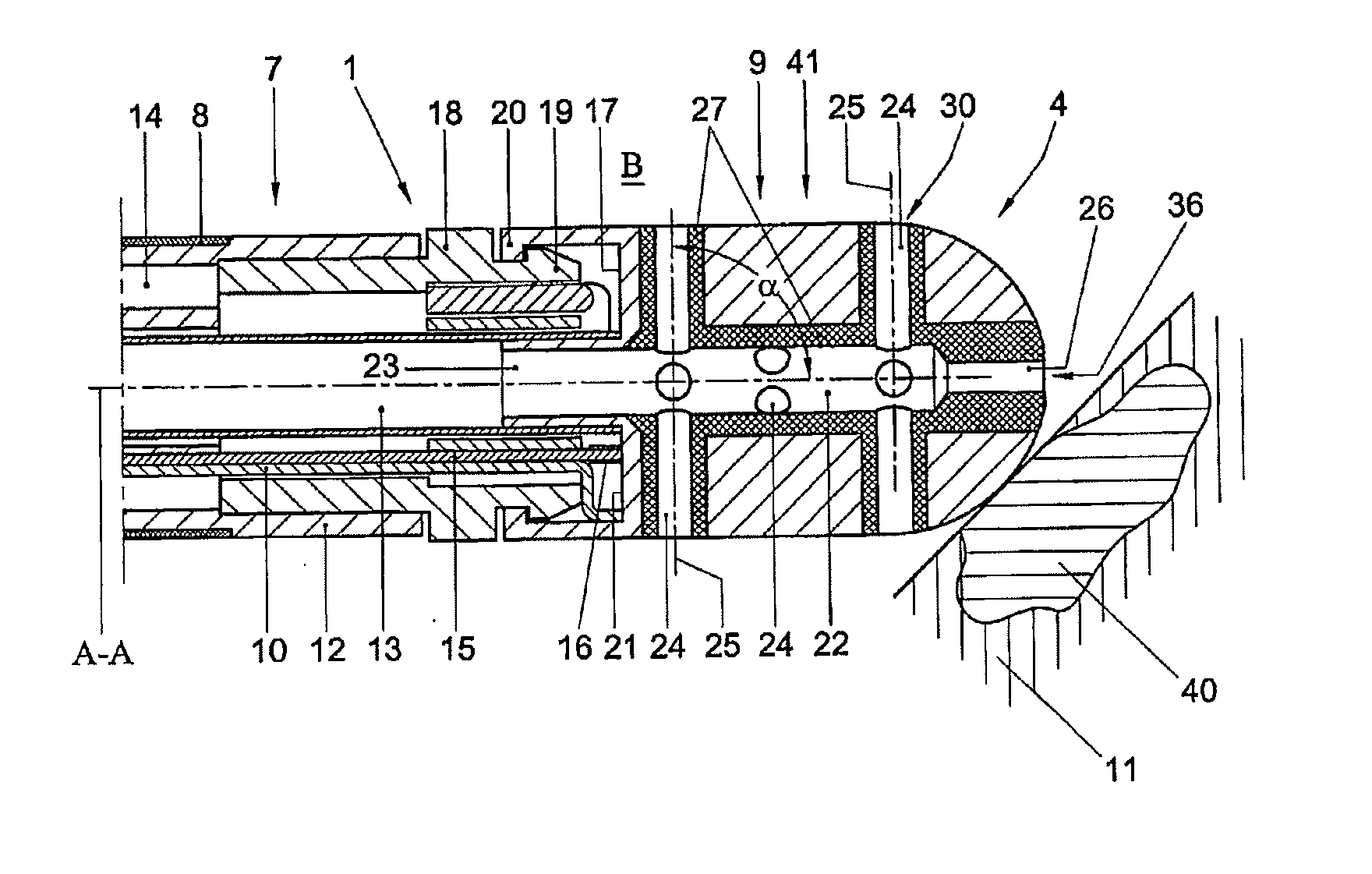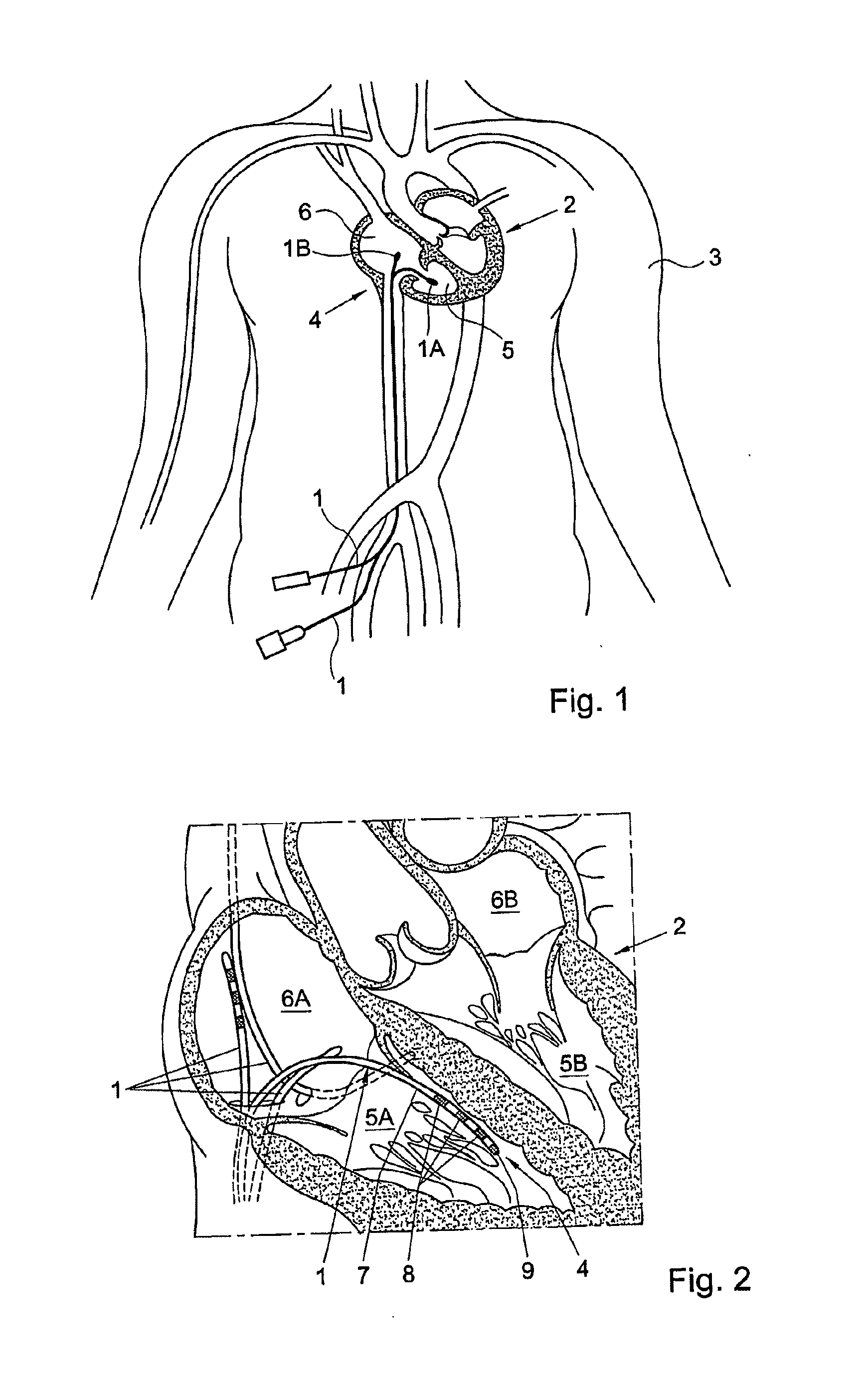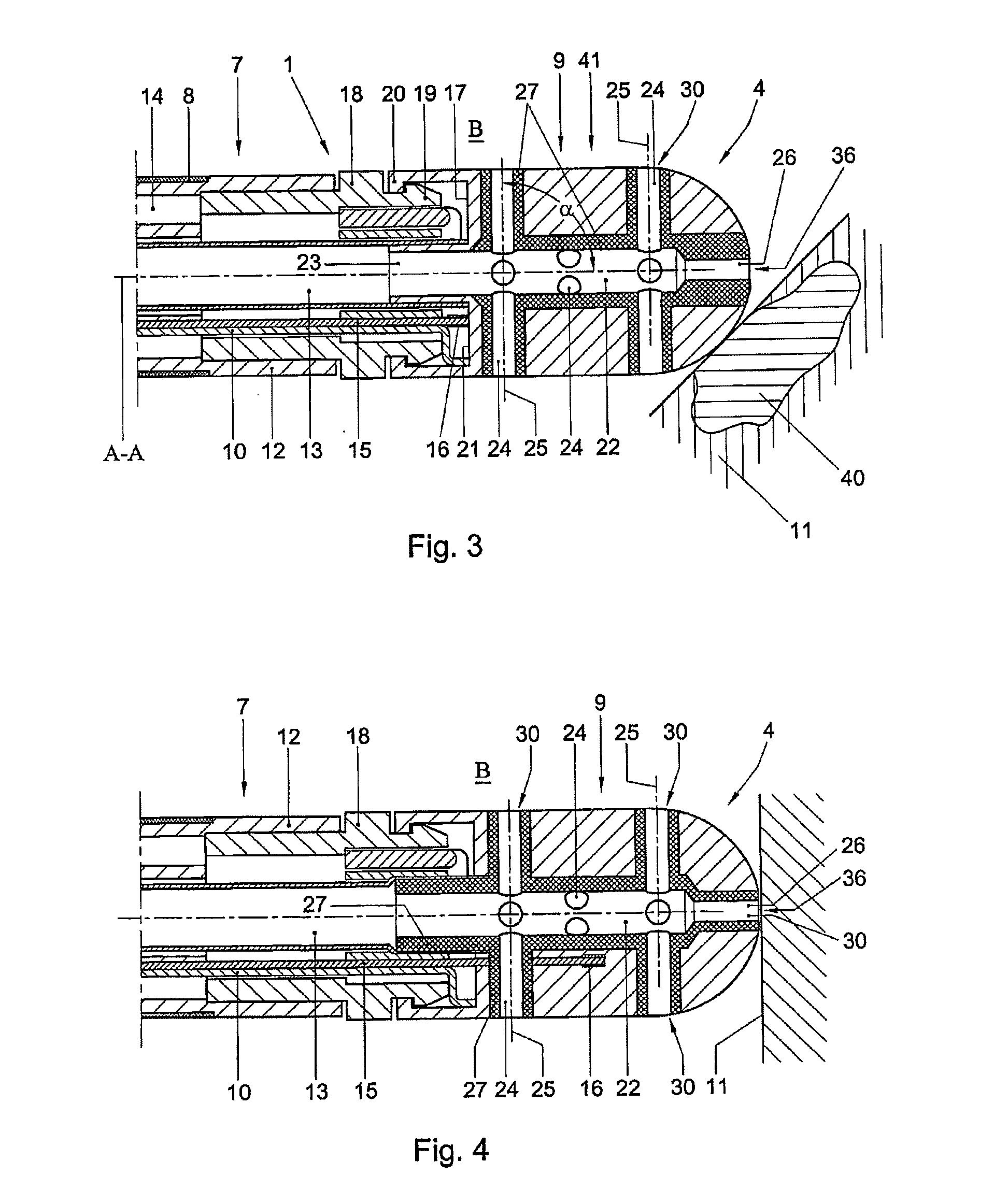Irrigated catheter and method, in particular for ablation and like techniques
a catheter and irrigated technology, applied in the field of catheters, can solve the problems of small temperature increase, dangerous situations in the body, dangerous to the health, etc., and achieve the effect of safe and accura
- Summary
- Abstract
- Description
- Claims
- Application Information
AI Technical Summary
Benefits of technology
Problems solved by technology
Method used
Image
Examples
Embodiment Construction
[0035]In this description, identical or corresponding parts have identical or corresponding reference numerals. The depicted embodiments are given only by way of example and should not be construed as being limitative in any manner. In particular, combinations of parts of the embodiments shown are also understood to be described herein. A body cavity is understood herein to include at least each part of a human or animal body which can be reached by a forward end of a catheter.
[0036]In FIG. 1 it is schematically shown how a catheter 1 has been inserted into a heart 2 of a patient 3. A forward end 4 of a catheter 1A is inserted into a ventricle 5, in particular a right ventricle of the heart, while the corresponding forward end 4 of a second catheter 1B is inserted into the right atrium 6 of the heart 2. This is merely shown as an illustration of possible positions. The catheter(s) is or are inserted into the heart 2 from, for instance, the groin of the patient 3, which is a known me...
PUM
 Login to View More
Login to View More Abstract
Description
Claims
Application Information
 Login to View More
Login to View More - R&D
- Intellectual Property
- Life Sciences
- Materials
- Tech Scout
- Unparalleled Data Quality
- Higher Quality Content
- 60% Fewer Hallucinations
Browse by: Latest US Patents, China's latest patents, Technical Efficacy Thesaurus, Application Domain, Technology Topic, Popular Technical Reports.
© 2025 PatSnap. All rights reserved.Legal|Privacy policy|Modern Slavery Act Transparency Statement|Sitemap|About US| Contact US: help@patsnap.com



